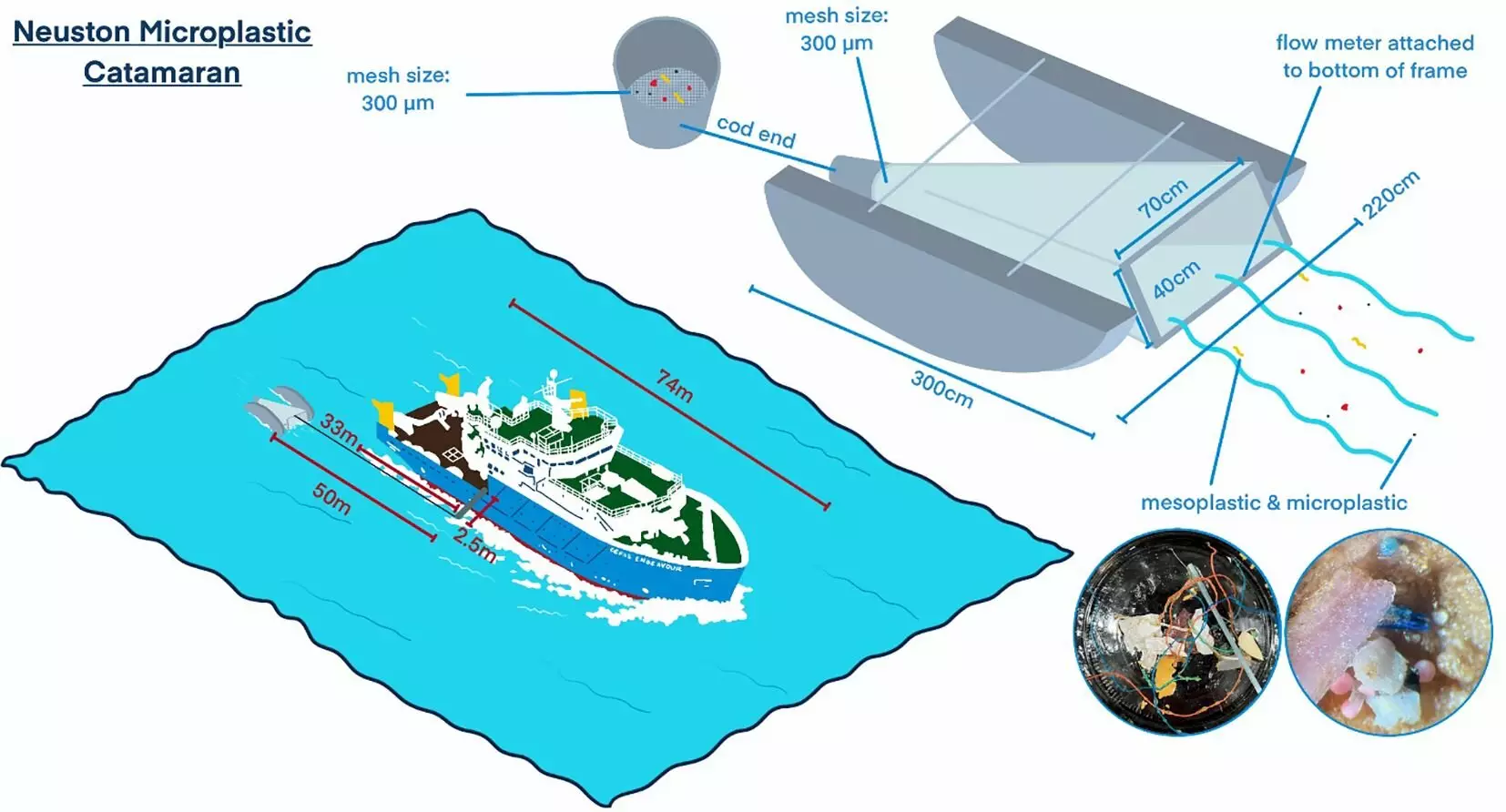The pervasive issue of microplastic pollution has emerged as a critical environmental concern, particularly in our oceans. While striking visuals of marine wildlife ensnared in larger plastic debris capture public attention, the hidden threat lies in the millions of tiny particles infiltrating marine ecosystems. It is estimated that approximately 12.7 million tons of plastic enter the ocean annually, not only from land-based sources but also from various marine activities such as fishing and shipping. Yet, the visible evidence of this pollution does not tell the full story. Much of the microplastic waste is sinking to the ocean floor or becoming entangled in marine sediments.
Recent studies, including one highlighted in “Frontiers in Marine Science,” have shed light on significant microplastic accumulation areas—often referred to as “sinks.” The North Sea, in particular, has been identified as one such area where the concentration of microplastics is alarmingly high.
Research Findings: The North Sea Microplastic Hotspot
In 2022, researchers led by Dr. Danja Hoehn from the U.K.’s Center for Environment, Fisheries and Aquaculture Science embarked on a detailed survey of microplastic concentrations in the North Sea. Utilizing an advanced Neuston Microplastic Catamaran, which features a flow meter and nets designed for plastic capture, the team meticulously gathered data on microplastic prevalence across various areas.
Their findings were staggering: the southern coastal waters of the North Sea exhibited concentrations exceeding 25,000 items per square kilometer. This figure starkly contrasts with lower concentrations detected further out and in other regions, such as offshore Scottish waters and the broader northeast Atlantic.
The composition of the microplastics collected predominantly consisted of polyethylene (67%), polypropylene (16%), and polystyrene (8%). These materials, commonly found in everyday items—ranging from shopping bags to food containers—underscore the ubiquitous nature of plastic in our daily lives and highlight the challenges of combating this pollution.
The research revealed not only the shocking concentrations of microplastic debris but also significant variations in micro plastic densities across the studied areas. For instance, notable pollution hotspots detected near East Anglia were alarming yet necessary reminders of how ocean currents can transport plastics from various geographic locations, creating concentrated zones of pollution even far from urban centers. Despite the large quantities reported, the average concentrations in U.K. waters were still significantly lower than those reported in other regions, such as off the coast of northwest Spain or the Canary Islands.
Moreover, the persistence of microbeads—despite their ban in the U.K. since 2018—points to the transboundary nature of plastic pollution and the need for a coordinated international response.
Strategies and Initiatives to Combat Pollution
Efforts to tackle plastic pollution are multilayered and involve both national and global initiatives. The U.K.’s Marine Strategy aims to establish indicators for microplastic presence in marine sediments, while the North-East Atlantic Environmental Strategy focuses on minimizing and preventing litter inputs. Furthermore, the UN Environmental Agency has been spearheading endeavors towards a legally binding agreement to put an end to plastic pollution by 2040.
Given that global plastic production has exceeded 400 million tons annually, understanding and mitigating microplastic contamination in marine environments remains a pressing priority. As the evidence of microplastics’ detrimental impact on marine ecosystems continues to grow, it is evident that robust, collaborative efforts are needed to protect our oceans for future generations.
The findings from studies like Dr. Hoehn’s serve as clarion calls for more extensive research and action against microplastic pollution. While captivating images of marine creatures tangled in larger plastic debris resonate with many, it is the invisible crisis of microplastics that threatens biodiversity and the health of ocean ecosystems. By amplifying our understanding of microplastic sources and sinks, we can devise effective strategies that not only address current pollution but also act proactively to prevent further contamination. The fate of our oceans—and indeed, the planet—depends on our willingness to act decisively against this hidden yet pervasive threat.

